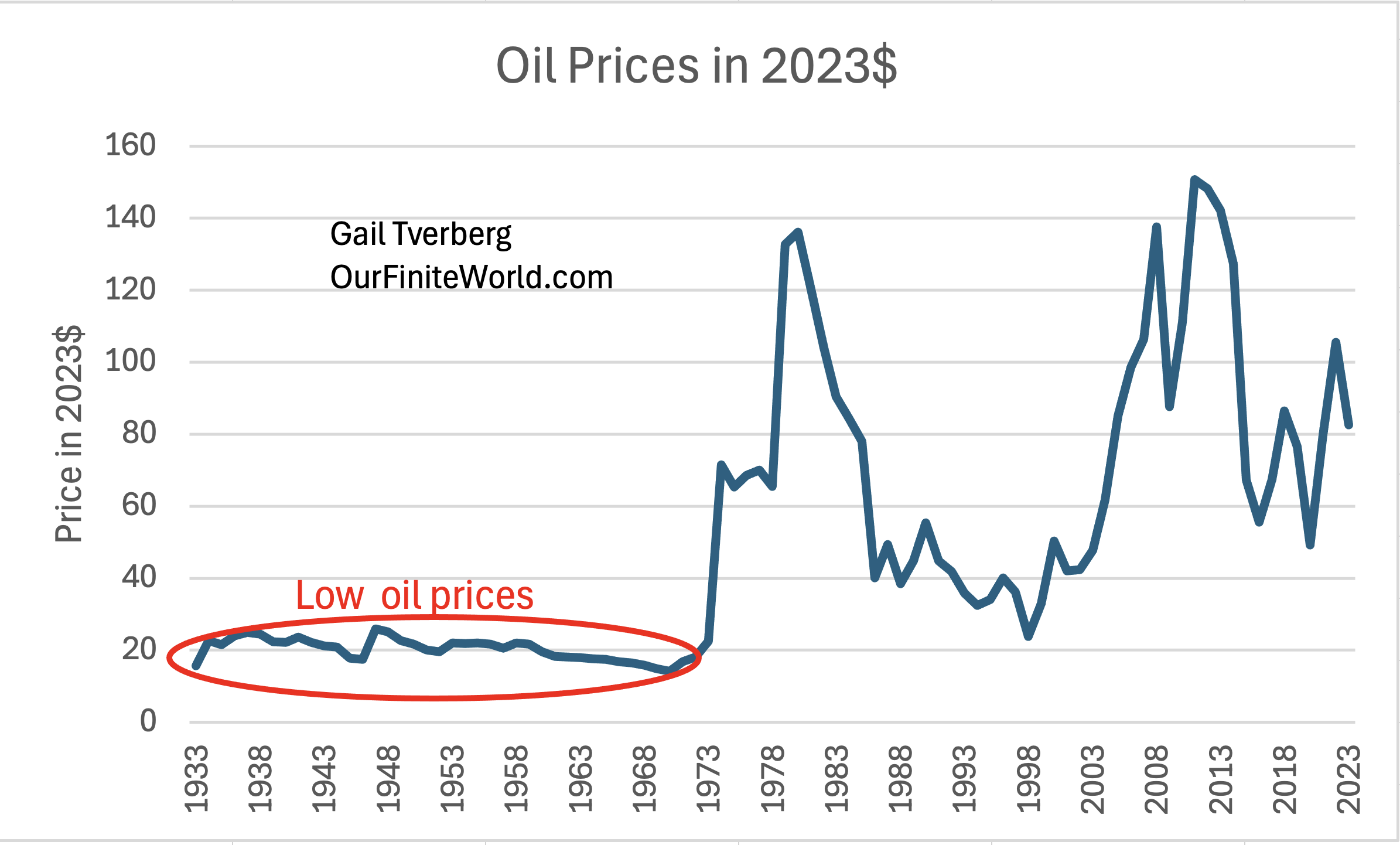eleitl 19h ago • 100%
An idiotic idea which will go nowhere just the one about putting PV modules on road surfaces was.
eleitl 19h ago • 100%
Does Mac OS automatically allow random connected devices outbound traffic to any?
eleitl 19h ago • 50%
Does Mac OS automatically allow random connected devices outbound traffic to any?
eleitl 20h ago • 100%
This isn't the first time LG tries to pull this shit.
eleitl 20h ago • 100%
Summary Background Climate change has adverse effects on youth mental health and wellbeing, but limited large-scale data exist globally or in the USA. Understanding the patterns and consequences of climate-related distress among US youth can inform necessary responses at the individual, community, and policy level. Methods A cross-sectional descriptive online survey was done of US youth aged 16–25 years from all 50 states and Washington, DC, between July 20 and Nov 7, 2023, via the Cint digital survey marketplace. The survey assessed: climate-related emotions and thoughts, including indicators of mental health; relational aspects of climate-related emotions; beliefs about who or what has responsibility for causing and responding to climate change; desired and planned actions in response to climate change; and emotions and thoughts about the US Government response to climate change. Respondents were asked whether they had been affected by various severe weather events linked to climate change and for their political party identification. Sample percentages were weighted according to 2022 US census age, sex, and race estimates. To test the effects of political party identification and self-reported exposure to severe weather events on climate-related thoughts and beliefs we used linear and logistic regression models, which included terms for political party identification, the number of self-reported severe weather event types in respondents' area of residence in the past year, and demographic control variables. Findings We evaluated survey responses from 15 793 individuals (weighted proportions: 80·5% aged 18–25 years and 19·5% aged 16–17 years; 48·8% female and 51·2% male). Overall, 85·0% of respondents endorsed being at least moderately worried, and 57·9% very or extremely worried, about climate change and its impacts on people and the planet. 42·8% indicated an impact of climate change on self-reported mental health, and 38·3% indicated that their feelings about climate change negatively affect their daily life. Respondents reported negative thoughts about the future due to climate change and actions planned in response, including being likely to vote for political candidates who support aggressive climate policy (72·8%). In regression models, self-reported exposure to more types of severe weather events was significantly associated with stronger endorsement of climate-related distress and desire and plans for action. Political party identification as Democrat or as Independent or Other (vs Republican) was also significantly associated with stronger endorsement of distress and desire and plans for action, although a majority of self-identified Republicans reported at least moderate distress. For all survey outcomes assessed in the models, the effect of experiencing more types of severe weather events did not significantly differ by political party identification.
 www.nature.com
www.nature.com
Abstract The rise in globally averaged sea level—or global mean sea level—is one of the most unambiguous indicators of climate change. Over the past three decades, satellites have provided continuous, accurate measurements of sea level on near-global scales. Here, we show that since satellites began observing sea surface heights in 1993 until the end of 2023, global mean sea level has risen by 111 mm. In addition, the rate of global mean sea level rise over those three decades has increased from ~2.1 mm/year in 1993 to ~4.5 mm/year in 2023. If this trajectory of sea level rise continues over the next three decades, sea levels will increase by an additional 169 mm globally, comparable to mid-range sea level projections from the IPCC AR6.
eleitl 2d ago • 100%
If you can't understand Russian and Ukrainian and are thought-constrained by the Overton window you won't find much value there. I do, though >95% of everything is drek and you have to have the time and enough built-in analytics between your ears.
 www.nature.com
www.nature.com
Abstract The 2015 Paris agreement was established to limit Greenhouse gas (GHG) global warming below 1.5°C above preindustrial era values. Knowledge of climate sensitivity to GHG levels is central for formulating effective climate policies, yet its exact value is shroud in uncertainty. Climate sensitivity is quantitatively expressed in terms of Equilibrium Climate Sensitivity (ECS) and Transient Climate Response (TCR), estimating global temperature responses after an abrupt or transient doubling of CO2. Here, we represent the complex and highly-dimensional behavior of modelled climate via low-dimensional emergent networks to evaluate Climate Sensitivity (netCS), by first reconstructing meaningful components describing regional subprocesses, and secondly inferring the causal links between these to construct causal networks. We apply this methodology to Sea Surface Temperature (SST) simulations and investigate two different metrics in order to derive weighted estimates that yield likely ranges of ECS (2.35–4.81°C) and TCR (1.53-2.60°C). These ranges are narrower than the unconstrained distributions and consistent with the ranges of the IPCC AR6 estimates. More importantly, netCS demonstrates that SST patterns (at “fast” timescales) are linked to climate sensitivity; SST patterns over the historical period exclude median sensitivity but not low-sensitivity (ECS < 3.0°C) or very high sensitivity (ECS ≥ 4.5°C) models.
eleitl 3d ago • 100%
That your audience is global.
eleitl 3d ago • 16%
Try Telegram and the Moon of Alabama for that.
eleitl 3d ago • 100%
It's 26 to 32 kg so it's its own piece of luggage https://en.m.wikipedia.org/wiki/W54#/media/File%3ASADM_carry_bag.jpg
eleitl 3d ago • 50%
I am sure Tourette's syndrome sufferers are sweating bullets. Or was it bombs?
eleitl 3d ago • 100%
They obviously do not.
eleitl 3d ago • 100%
Sure, but you do realize the situation is typically different outside of the US?
eleitl 3d ago • 100%
What is stopping renters to use these then, and give a middle finger to the landlords?
eleitl 3d ago • 75%
You're sure living in a real estate bubble. Not going to last, thankfully.
eleitl 3d ago • 100%
I live in such a place. This is obviously rent gouging.
eleitl 4d ago • 29%
If the landlords do not provide a service, you're welcome to go to the bank to approve your loan, buy or build a house, maintain it, pay back the loan and deal with delinquent renters and sell it when it's time for you to move out. None of which concerns you as a renter.
It is a massive PITA and it's a so-so store of value at best. That there are assholes who charge you through the nose for the rent doesn't mean it's a landlord problem. It's an asshole problem.
eleitl 4d ago • 100%
You might find related https://ourfiniteworld.com/2024/10/14/oil-shortages-lead-to-hidden-conflicts-even-war/ to be also of interest. For another view angle check out the surplus energy economy blog.
The problem with current fossil is that it is no longer cheap even if it wasn't peaking while also cooking us in the process.
The problem with current renewables is that they need fossil or battery backup to be dispatchable which makes the aggregate even more expensive than current fossil. Worse, they are not autopoietic (self sustaining) so only extendeders or boosters of fossils.
 www.nature.com
www.nature.com
Abstract Recent studies show that current trends in yield improvement will not be sufficient to meet projected global food demand in 2050, and suggest that a further expansion of agricultural area will be required. However, agriculture is the main driver of losses of biodiversity and a major contributor to climate change and pollution, and so further expansion is undesirable. The usual proposed alternative—intensification with increased resource use—also has negative effects. It is therefore imperative to find ways to achieve global food security without expanding crop or pastureland and without increasing greenhouse gas emissions. Some authors have emphasized a role for sustainable intensification in closing global ‘yield gaps’ between the currently realized and potentially achievable yields. However, in this paper we use a transparent, data-driven model, to show that even if yield gaps are closed, the projected demand will drive further agricultural expansion. There are, however, options for reduction on the demand side that are rarely considered. In the second part of this paper we quantify the potential for demand-side mitigation options, and show that improved diets and decreases in food waste are essential to deliver emissions reductions, and to provide global food security in 2050.
Editor’s summary Plants rely on seed dispersal, often by animals, for individual movement and population spread. Habitat loss and environmental change are known to threaten many plant and animal species, but the effects of population declines on the potential for seed dispersal are largely unknown. To address this knowledge gap, Mendes et al. synthesized data on plant-animal seed dispersal interactions for the whole of Europe and characterized each species interaction as being of low, high, or very high concern based on the species’ conservation statuses and population trajectories. Almost one-third of all species interactions were found to be of high or very high concern, potentially further threatening plant species’ persistence. However, data gaps are substantial, and this finding requires further study and evaluation. —Bianca Lopez Abstract Seed dispersal is crucial for ecosystem persistence, especially in fragmented landscapes, such as those common in Europe. Ongoing defaunation might compromise effective seed dispersal, but the conservation status of pairwise interactions remains unknown. With a literature review, we reconstructed the first European-wide seed dispersal network and evaluated the conservation status of interactions by assessing each interacting partner’s IUCN (International Union for Conservation of Nature) conservation status and population trends. We found that a third of the disperser species and interactions face potential extinction and that 30% of the plant species have most of their dispersers threatened or declining. Our study reveals a developing seed dispersal crisis in Europe and highlights large knowledge gaps regarding the dispersers and conservation status of zoochorous plants, urging further scrutiny and action to conserve the seed dispersal service.
 www.nature.com
www.nature.com
Abstract Global emission reduction efforts continue to be insufficient to meet the temperature goal of the Paris Agreement1. This makes the systematic exploration of so-called overshoot pathways that temporarily exceed a targeted global warming limit before drawing temperatures back down to safer levels a priority for science and policy2,3,4,5. Here we show that global and regional climate change and associated risks after an overshoot are different from a world that avoids it. We find that achieving declining global temperatures can limit long-term climate risks compared with a mere stabilization of global warming, including for sea-level rise and cryosphere changes. However, the possibility that global warming could be reversed many decades into the future might be of limited relevance for adaptation planning today. Temperature reversal could be undercut by strong Earth-system feedbacks resulting in high near-term and continuous long-term warming6,7. To hedge and protect against high-risk outcomes, we identify the geophysical need for a preventive carbon dioxide removal capacity of several hundred gigatonnes. Yet, technical, economic and sustainability considerations may limit the realization of carbon dioxide removal deployment at such scales8,9. Therefore, we cannot be confident that temperature decline after overshoot is achievable within the timescales expected today. Only rapid near-term emission reductions are effective in reducing climate risks.
Abstract The recent concurrence of electrical grid failure events in time with extreme temperatures is compounding the population health risks of extreme weather episodes. Here, we combine simulated heat exposure data during historical heat wave events in three large U.S. cities to assess the degree to which heat-related mortality and morbidity change in response to a concurrent electrical grid failure event. We develop a novel approach to estimating individually experienced temperature to approximate how personal-level heat exposure changes on an hourly basis, accounting for both outdoor and building-interior exposures. We find the concurrence of a multiday blackout event with heat wave conditions to more than double the estimated rate of heat-related mortality across all three cities, and to require medical attention for between 3% (Atlanta) and more than 50% (Phoenix) of the total urban population in present and future time periods. Our results highlight the need for enhanced electrical grid resilience and support a more spatially expansive use of tree canopy and high albedo roofing materials to lessen heat exposures during compound climate and infrastructure failure events.












